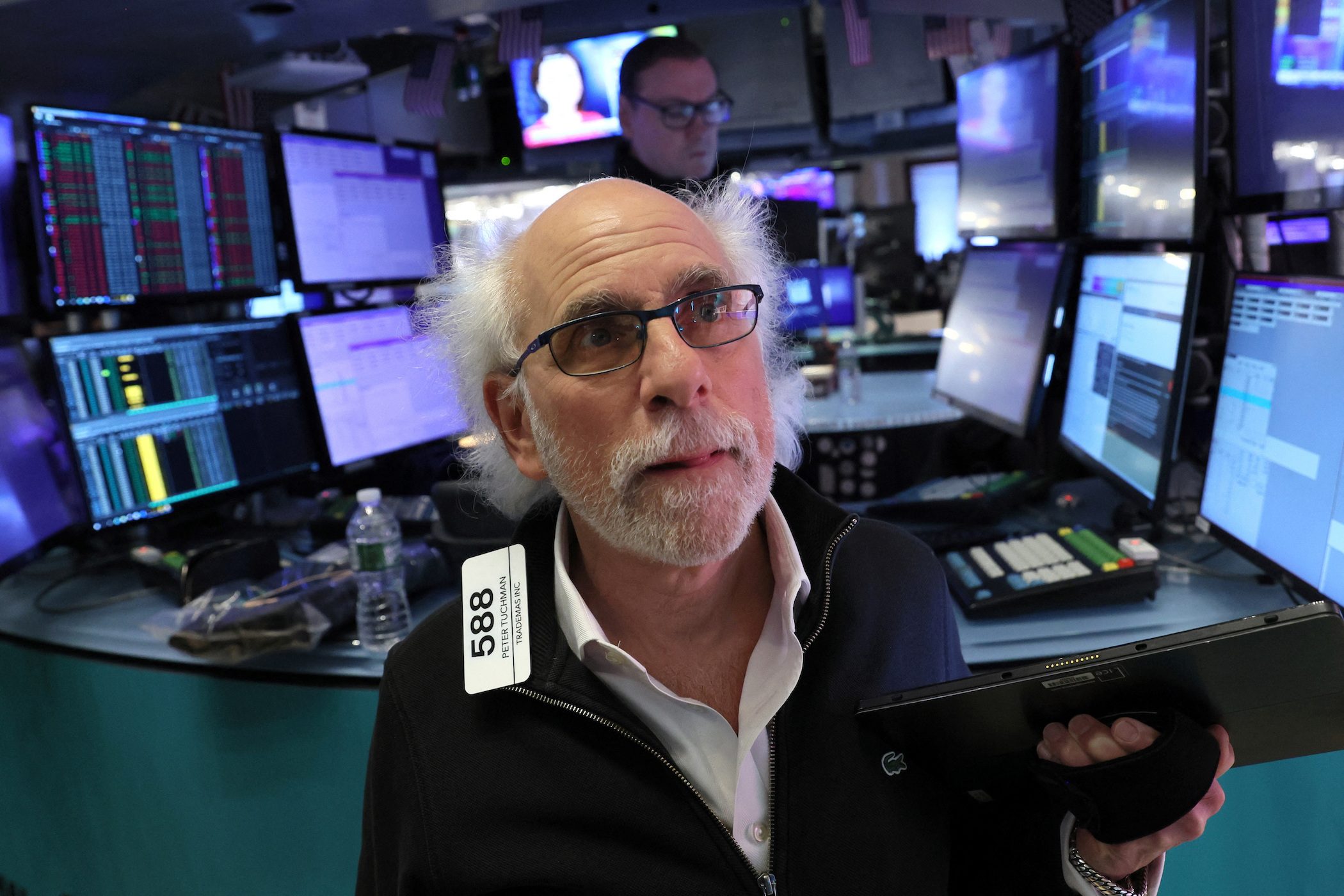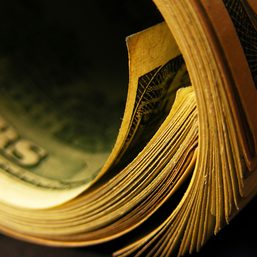SUMMARY
This is AI generated summarization, which may have errors. For context, always refer to the full article.

NEW YORK, USA – A global measure of stocks fell for the fourth consecutive day while the dollar gained some ground as the European Central Bank (ECB) raised rates on Thursday, May 4, and signaled the need for more tightening a day after the US Federal Reserve also raised rates.
US Treasury yields were lower while oil prices stabilized after sharply declining earlier in the week.
Along with investor indigestion over central bank messaging, Wall Street stock indexes were also under pressure from another rout in US bank shares, which have reeled from the collapse of a third major regional bank over the weekend.
European stocks closed lower after the ECB, the central bank for the 20 countries that share the euro currency, raised interest rates by 25 basis points to 3.25% and signaled that more tightening would be needed to tame inflation.
In contrast to the ECB, the Fed had implied that its marathon hiking cycle may be ending.
While the idea of a pause in US rate hikes was welcome news for US investors, it came with the implication that the economy is slowing, said Lauren Goodwin, economist and portfolio strategist at New York Life Investments in New York.
“This balance between potential interest rate stability and an increase in recession risk is what markets are trying to digest today,” said Goodwin.
In particular, the economist saw the Fed’s reference to tightening credit conditions as a confirmation of her expectations of an economic downturn.
“It’s highly unlikely we’ll avoid a recession,” Goodwin said. “We’re on a clear path toward a recession in the next few months.”
The Dow Jones Industrial Average fell 286.5 points, or 0.86%, to 33,127.74, and the S&P 500 lost 29.53 points, or 0.72%, to 4,061.22. The Nasdaq Composite dropped 58.93 points, or 0.49%, to 11,966.40.
All three of Wall Street’s major indexes marked their fourth straight day of losses. For Nasdaq, it was its longest stretch of losses since December.
MSCI’s gauge of stocks across the globe shed 0.47%, reflecting its first four-day losing streak since mid-March.
In contrast, emerging market stocks rose 0.70% after three straight sessions of declines.
Adding to US investor worries, another US regional bank – PacWest Bancorp – signaled troubles days after First Republic collapsed.
The S&P 500 bank index closed down 2.8% while the KBW regional banking index lost 3.5%.
Tim Ghriskey, senior portfolio strategist at Ingalls & Snyder, noted that concerns about banks, and the tighter lending conditions they are now offering, spilled into other sectors such as the Dow Transports index, which closed down 1.3%.
“With the banking crisis we’ll have tighter credit. There’ll be less lenders willing to lend,” said Ghriskey, who notes the example that airlines will face higher rates and less available credit available to buy new aircraft.
Among currencies, the dollar gained against the euro as investors digested the ECB’s rate hike.
The dollar index rose 0.188%, with the euro down 0.43% to $1.1011. The Japanese yen strengthened 0.39% versus the greenback at 134.16 per dollar.
“The monetary policy dynamics are more or less fully priced in here at this point in terms of the tightening cycle. Now, it’s going to be a focus on the bets on when the Fed starts to ease, how much it eases, and how that relates to what [other] central banks are doing,” said Shaun Osborne, chief FX strategist at Scotiabank in Toronto.
In Treasuries, benchmark 10-year yields and 2-year yields sank as investors worried about regional banks and signs of a weakening economy.
Benchmark 10-year notes were down 3.4 basis points to 3.369%, from 3.403% late on Wednesday, May 3. The 30-year bond was last up 0.9 basis points to yield 3.7243%, from 3.715%. The 2-year note was last down 17.3 basis points to yield 3.7656%, from 3.939%.
In energy, crude oil prices stabilized after three straight days of sharp declines due to demand concerns in major consuming countries resulting from worries about the global economy.
US crude settled down 0.06% at $68.56 per barrel and Brent ended at $72.50, up 0.24% on the day.
Meanwhile, spot gold had touched its highest level in years as US banking concerns accelerated a flight to the safe-haven asset.
Spot gold added 0.6% to $2,050.66 an ounce. US gold futures gained 0.95% to $2,047.90 an ounce. – Rappler.com
Add a comment
How does this make you feel?





There are no comments yet. Add your comment to start the conversation.